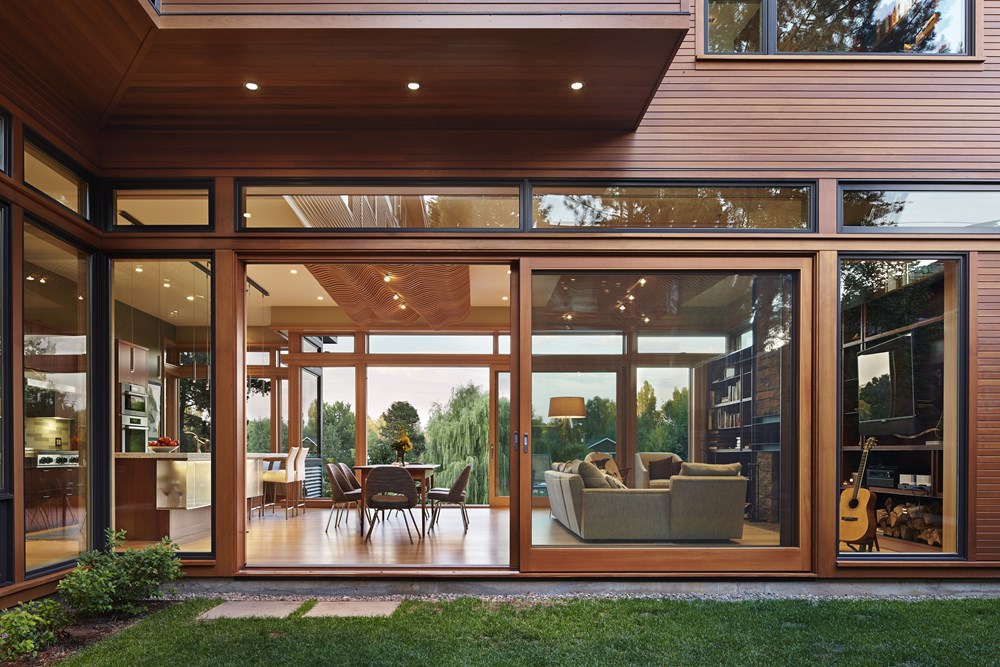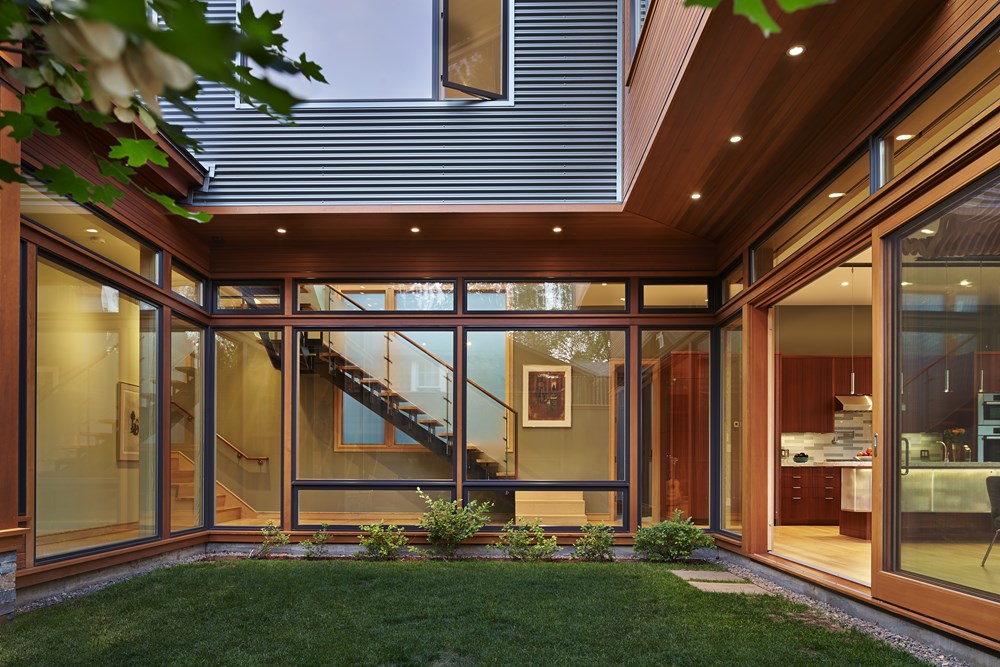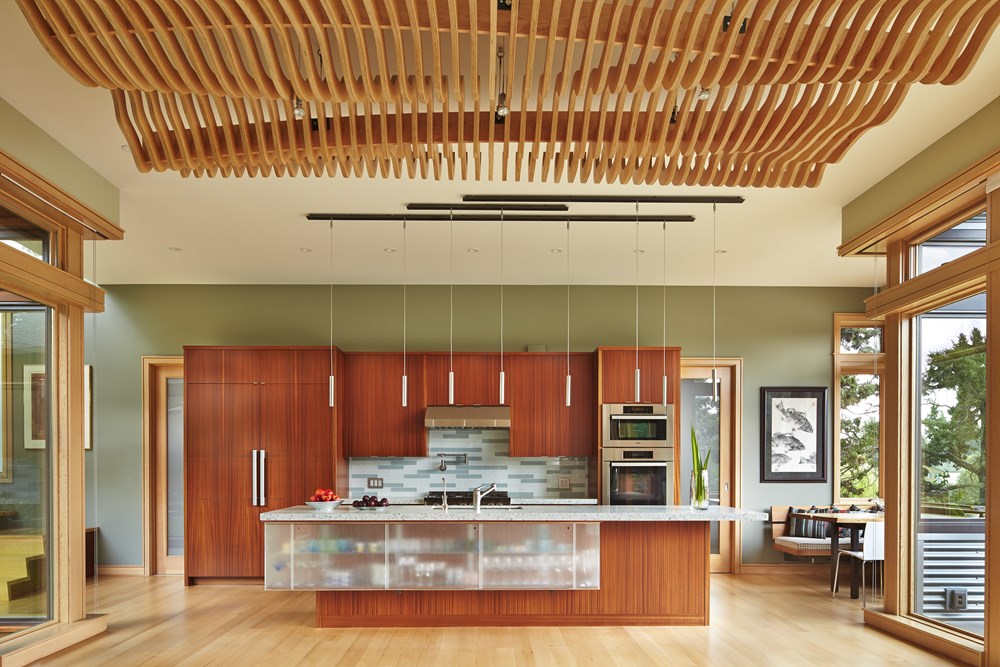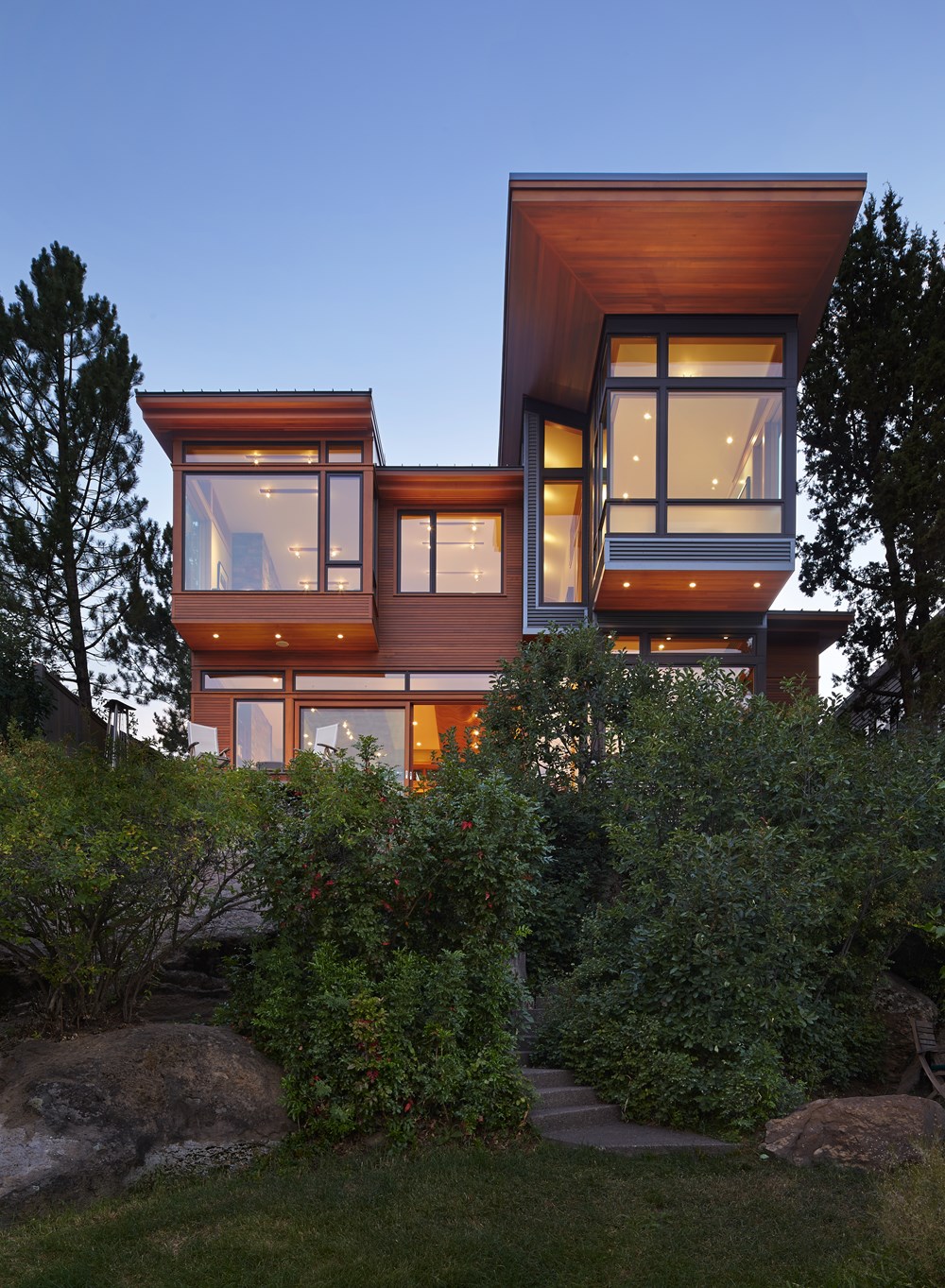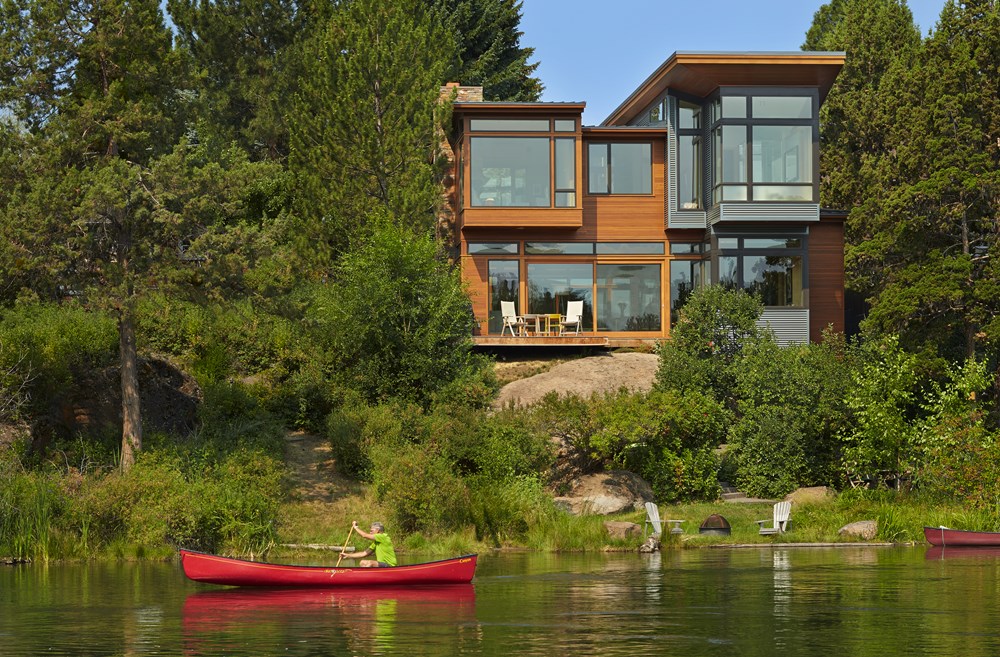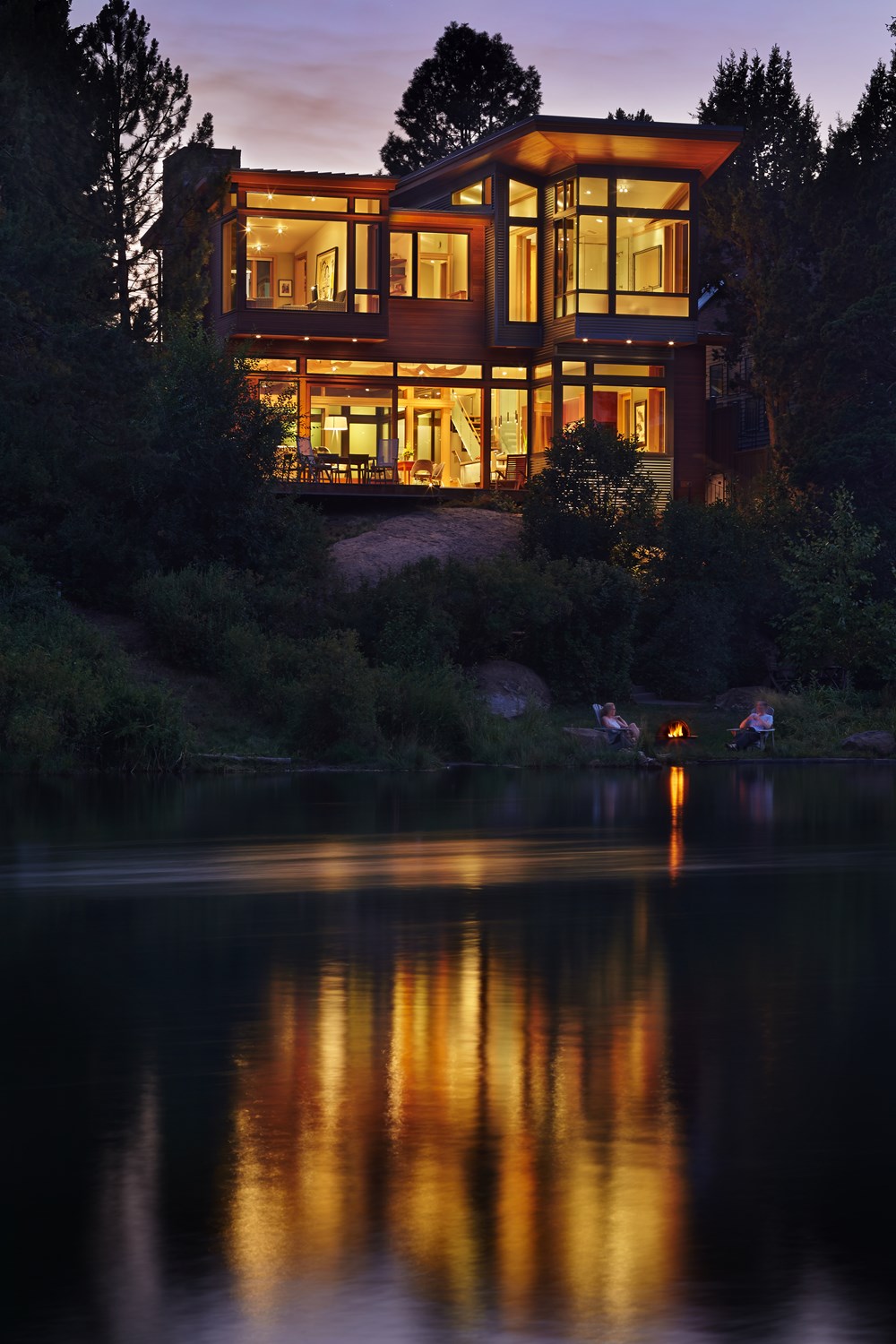The Deschutes House is a river house designed by FINNE Architects, located on a narrow site facing the Deschutes River in Bend, Oregon. The house has been sited to preserve a beautiful stone ledge close to the water, with the main wood deck hovering a few inches above the stone. All the major spaces open up to the river, which usually has a continuous flow of water craft.
- .
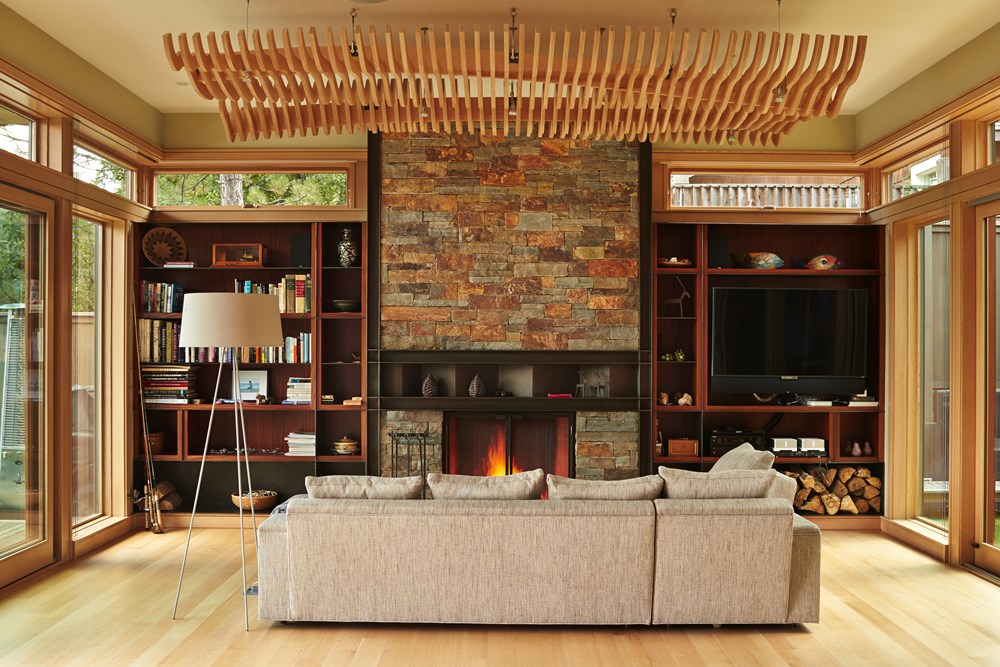


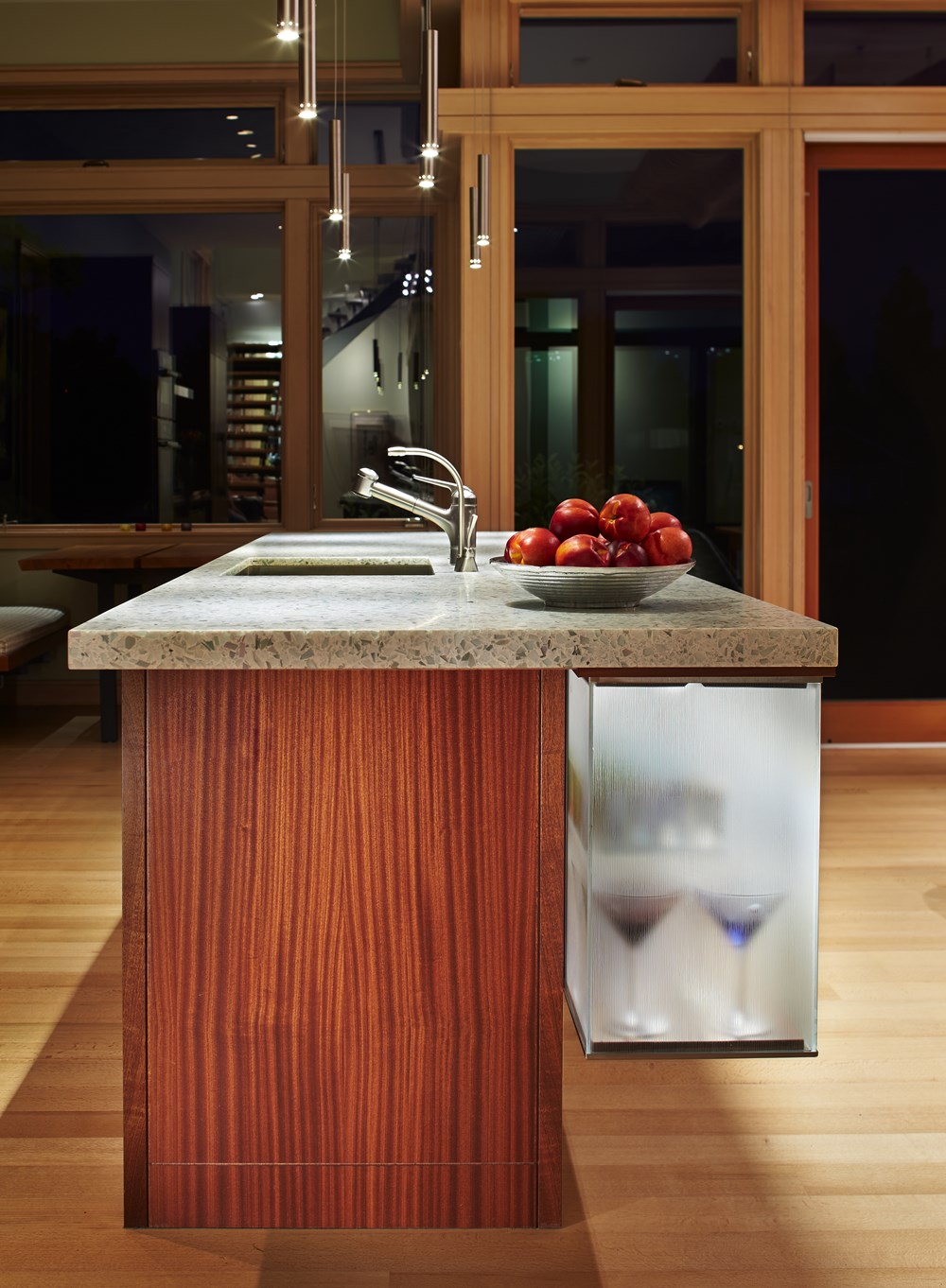
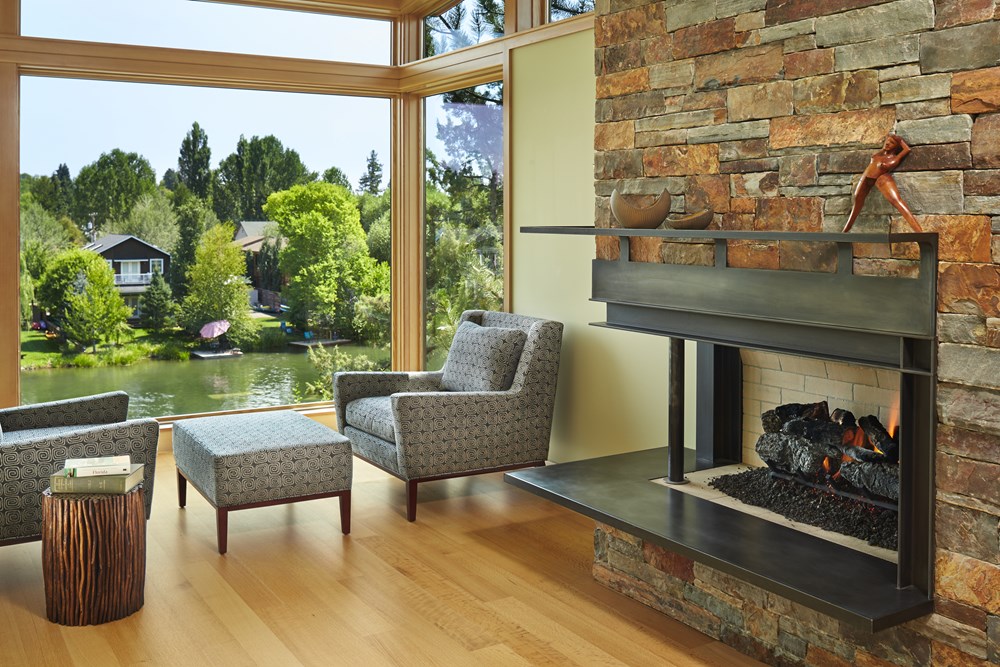
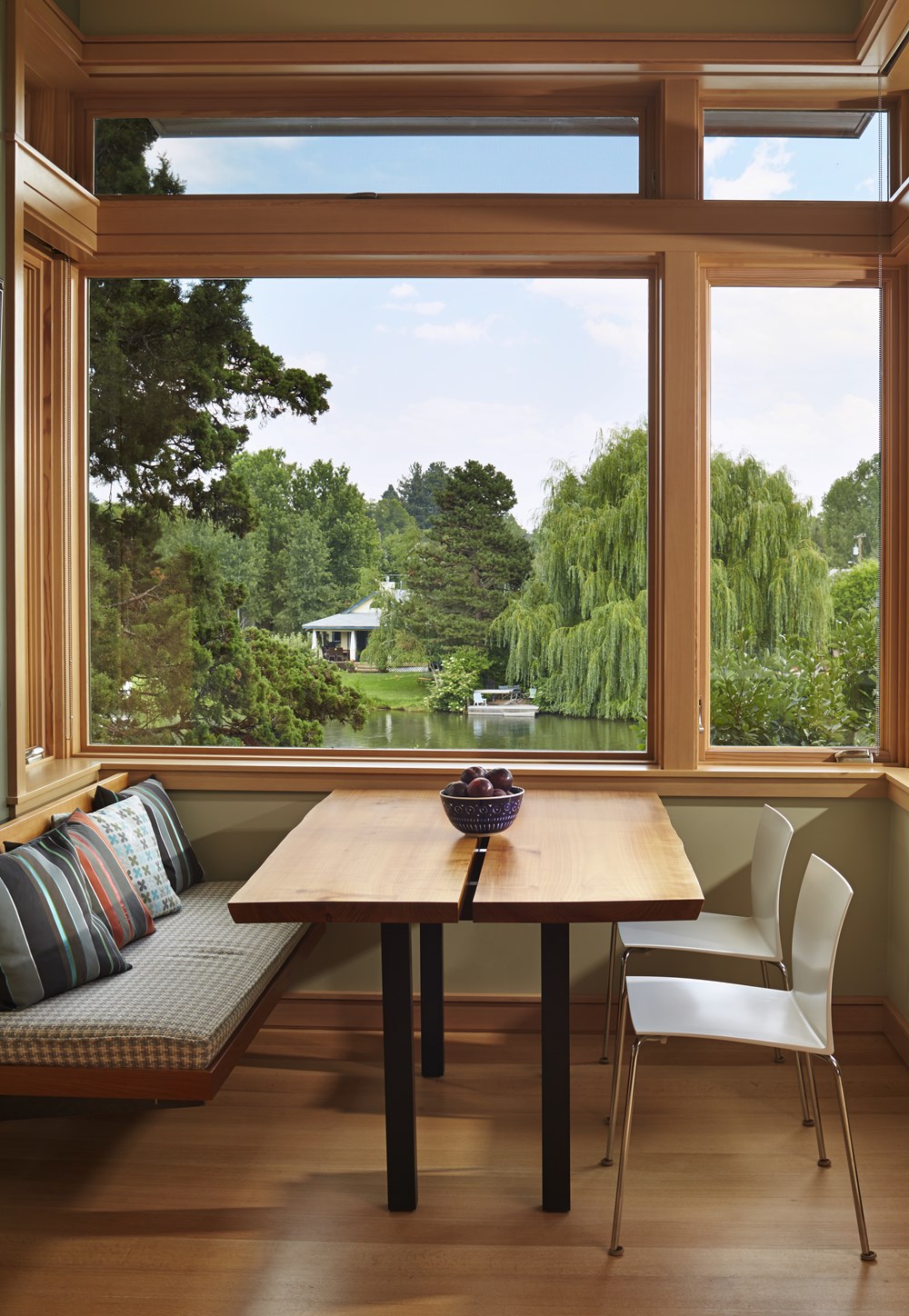
The main living space has large 8-ft by 8-ft sliding glass panels opening to both the river on one side and to a south-facing courtyard on the opposite side. The courtyard provides a quiet and contemplative space, in contrast to the busy and active river side of the house. Upstairs, the master bath cantilevers dramatically out toward the river, allowing the freestanding tub to visually float over the river traffic. The master bedroom and study also enjoy spectacular river views.
In terms of exterior materials, the house is clad with a two different types of siding: tightly spaced Western red cedar and corrugated metal siding. The cedar is stained a natural wood color, contrasting with the “zinc grey”color of the metal siding. The roofing material is a standing seam metal material, also in “zinc grey.” The warm tones of the wood are juxtaposed against the cool tones of the metal siding and metal roofing. The fireplace chimney is clad in Montana ledgestone with a combination of earth tones and grey-blue colors.
In the main living/dining space, two curvilinear wood ceiling panels are suspended over the living and dining spaces. Each panel has 60 uniquely shaped wood slats, tightly spaced in order to create an abstracted river landscape. The slats were all milled using CNC equipment. Other notable interior details include a folded steel fireplace mantle, the suspended glass kitchen island cabinet (with LED lighting), and a sculptural steel, glass and wood stair. These details all reflect the idea of “Crafted Modernism,” allowing a modern house to be enhanced by beautifully crafted materials and surfaces.
The house was designed to be a sustainable structure from the start, with 40% higher insulation values than required by code, radiant hydronic heating, efficient natural ventilation, large amounts of natural lighting, water-conserving plumbing fixtures, LED lighting and locally sourced materials. Windows have high-performance Low-E insulated glazing and are equipped with concealed shades. The radiant hydronic heat system allows lower operating temperatures and higher occupant comfort levels. The “gypcrete” for the radiant tubes conserves heat and provides great warmth and comfort for the feet. Hot-water solar panels on the roof serve the domestic hot water supply and the radiant heating.
Deep roof overhangs, built-in shades and high operating clerestory windows are used to reduce heat gain in summer months. During the winter, the lower sun angle is able to penetrate into living spaces and passively warm the floor. Low VOC paints and stains have been used throughout the house. The high level of craft evident in the house reflects another key principle of sustainable design: eschew “throw-away-ism” and make the house last many years!
Photography by Benjamin Benschneider
